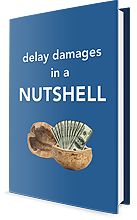Concurrent Delay: What Is A Concurrent Delay?
As discussed in the previous posting introducing the concept of concurrent delay, owners and contractors often argue for the existence of concurrent delay on their construction projects. Sometimes these arguments make sense; sometimes they don’t. Most times there is a lot of money at stake in the form of delay damages. These delay damages include the contractor’s extended general conditions and unabsorbed home office overhead costs that might result from an owner-caused delay that delayed the project’s completion or an owner’s assessment of liquidated damages that might result from a contractor-caused delay that delayed the project’s completion.
One common mistake is to conclude that concurrent delays need only be “concurrent” to be significant. In other words, some assume that simply because the other party’s delay happened as the same time as the delay you caused, that the other party’s delay negates yours in some way. To be truly concurrent, however, and to bar on the recovery of delay damages or the assessment of liquidated damages, the delays have to be more than just concurrent. Unless the contract provides otherwise (the topic for another post), the delays also have to be critical.
These days, a well-written construction contract provides clear and complete definition of the critical path. However, even in this day and age, too many construction contracts do not define the critical path. One of the many negative consequences of failing to define that term is that it may enable the parties to make questionable concurrent delay arguments. In essence, it may allow a party to make an argument that a delay that was not critical is still concurrent and forgives the party’s responsibility to provide a time extension or pay delay costs for its critical delay.
Fortunately, even if your contract does not define the “critical path,” all is not lost. It’s well understood throughout the construction industry that every project has a critical path, even if the contract doesn’t require the use of a CPM schedule and even if the contract doesn’t define the term “critical path.” Consequently, though your contract may not prevent a bogus concurrent delay argument, widely understood industry standards should.
In essence, for two delays to be concurrent and for one delay to offset one party’s responsibility against another’s, the delays must be concurrently critical. In essence, both delays have to be capable of delaying the project’s forecast completion date. This is a high standard and truly concurrent delays are rare.
In an effort to illustrate a poor concurrency argument, consider a contractor that delays the project’s critical path causing the project to actually finish 20 days late. The contractor asserts, that the owner is responsible for a concurrent delay. This alleged owner-caused concurrent delay affected a work path that had positive float and never caused a delay to the project. In this circumstance, the alleged owner-caused concurrent delay should not be considered a valid concurrent delay and should not offset the contractor’s responsibility to pay the owner’s liquidated damages assessment based on a concurrency argument.
Except as will be discussed in an upcoming post, for either party to make a reasonable concurrent delay assertion, the alleged concurrent delay must also have delayed the project’s critical path which, ultimately, must also have resulted in a delay to the project’s forecast completion date.
Please look for the next posting on concurrent delay. We’ll tackle the question of: “How to Identify a Concurrent Delay?”

